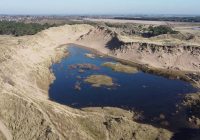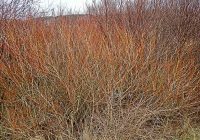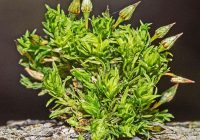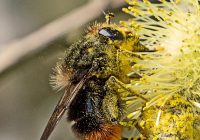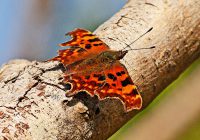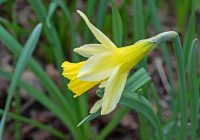Dr Phil Smith’s Wildlife Notes
March 2021
March was a relatively dry, settled month with measurable rain on only 10 days. However, wetter conditions from 9th to 16th raised the water-table at the Devil’s Hole to the highest level since I started measuring it in October 2015. The usual spring high pressure became established towards the end of the month, the warmest ever March temperature of 24.5 degrees being recorded in London on 30th. In Formby, it peaked at more reasonable 20 degrees. These spring heat-waves are becoming more frequent, as a predicted consequence of climate change.
On my way down to the Devil’s Hole on 1st, I bumped into a chap taking aerial photos with a drone. He kindly sent me some of the Devil’s Hole showing the spectacular flooding. The following day, I visited the nearby Cabin Hill National Nature Reserve, mainly to photograph the water-levels. But there was also a surprising variety of wetland birds, including two Greylag Geese, two Teal, seven Shelduck, two Coot, a Grey Heron, my first Little Egret for the site, two Snipe and a Jack Snipe. Overhead, a Buzzard was calling, while my spirits were lifted further by two singing Skylarks, my first of the year. A few Common Toads were croaking but the water was too deep for further investigation. As usual, the display of Snowdrops in Cabin Hill Wood was fabulous and the first daffodils were just beginning to show.
Walking across Falklands Way dunes at Ainsdale on 7th, I was pleased to find a sizeable Rabbit warren, now a rare sight in the dunes. My goal was to photograph some more of the slacks on Ainsdale Local Nature Reserve, recently cleared of scrub by the two large machines brought in by Green Sefton. I described this work in last month’s notes but I had missed several sites at the south end of the reserve. What a wonderful job they have done! Over the next few years, it will be fascinating to see what colonises these slacks and the large bare sand patches created while burying the uprooted Sea Buckthorn and birch.
From about 100m away, I noticed a large bush with strikingly red stems. Closer inspection revealed a likely candidate for the extremely rare Don’s Willow, a hybrid between Creeping and Purple Willow. There are only just over 40 individuals known in Britain, 38 being on the Sefton dunes. Nearby, was another much smaller bush with similar features. I took some twigs to grow on in water, one surviving long enough to produce a few catkins, confirming that it was indeed a female of this hybrid. I’ll check the other one later in the month.
I heard that some scrub removal had also taken place at Queen’s Jubilee Nature Trail near Southport so I went to have a look on 8th. About half-a-hectare had indeed been cleared, mainly of Sea Buckthorn and Japanese Rose. I also checked some willow-woodland where I had found interesting mosses and liverworts previously. They were still there, including a nice specimen of Elegant Bristle-moss, a widespread species but one that was recorded as new to the Sefton Coast in 2017.
Having missed out last year, I thought I should reacquaint myself with the Early Sand-grass at Southport Marine Lake. This great rarity, ‘the smallest grass in the world’, was first found in 1996 by Dave Earl and his wife on the dunes west of the lake. Although its population runs into thousands, I was concerned to see how much Sea Buckthorn and Japanese Rose is extending into the grass’s habitat. In fact, this area of dunes has two of the largest patches of Sea Buckthorn on the coast, totalling about 0.8ha. Another rare species here is the Isle of Man Cabbage and, although it was far too early for flowers, I was delighted to find six plants in a new area.
One of my favourite insect groups, the hoverflies, start appearing in late March, these being attracted especially to willow catkins. A huge Grey Willow in Pinfold Meadow near the entrance to Ainsdale NNR had a fabulous display of male catkins and Pete Kinsella sent me photos of a fine selection of spring hoverflies he saw there on 30th. I went the following day, which wasn’t quite as good, though I did manage to see a new species, the Large Bear Hoverfly, a spectacular bumblebee mimic that is rather scarce in the Northwest. Several other hoverflies and two Commas added to the interest, while Chiffchaffs and a Willow Warbler were singing and two Buzzards flew low overhead mewing. For as long as I can remember a population of wild Daffodils has flowered near the reserve’s entrance track. They were still there – about 100 – another welcome reminder of the season.

